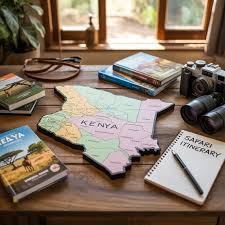A safari in Kenya is one of the most unforgettable adventures you can experience — close encounters with wildlife, golden sunsets, and breathtaking landscapes. While safaris are generally safe, it’s important to understand the basics of safari safety in Kenya so you can explore confidently and responsibly.
The first rule of safari safety is simple: always listen to your guide. Safari guides are experienced professionals who understand animal behavior and park rules. Whether you’re on a game drive, a walking safari, or a boat excursion, following their instructions ensures your safety and that of the animals.
When in wildlife areas, stay inside your vehicle unless told otherwise. Animals may appear calm, but sudden movements or noise can provoke them. Keeping a respectful distance allows you to observe nature naturally and safely.
Health and preparation are also key to safari safety in Kenya. Travelers should carry sunscreen, insect repellent, a hat, and plenty of water. If visiting during the rainy season, pack light waterproof gear. It’s also wise to confirm vaccinations and travel insurance before your trip.
While Kenya’s safari lodges and camps are secure, it’s best to keep valuables locked away and zip up tents at night to prevent curious visitors — both human and wild.
Lastly, practice eco-safety: avoid feeding animals, reduce plastic use, and respect park boundaries. These small acts not only protect you but also preserve Kenya’s natural heritage for generations to come.
At Touch Wild Tours & Travel, your safety and experience come first. We partner with trusted guides, licensed camps, and reliable transport services — ensuring that your safari safety in Kenya is guaranteed from start to finish.


